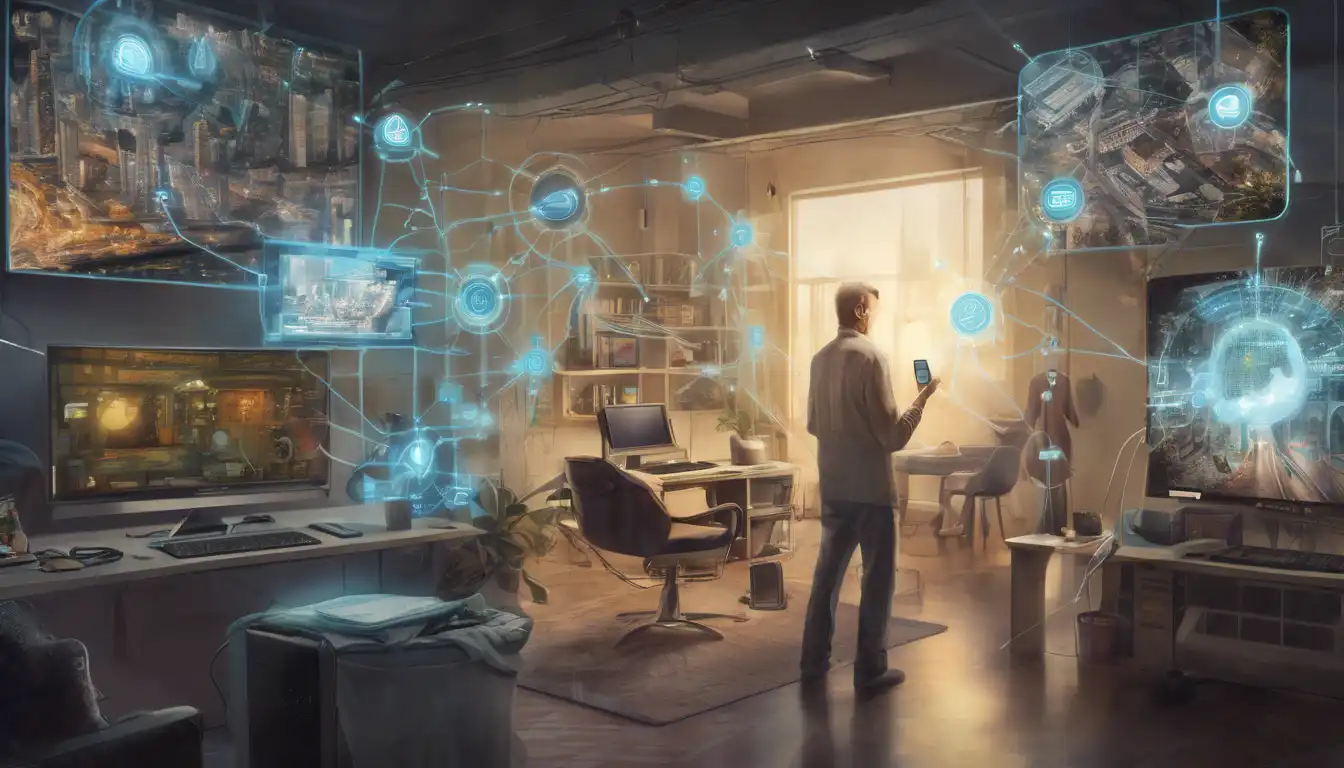Introduction to the Internet of Things (IoT)
The Internet of Things (IoT) represents a revolutionary shift in how we interact with technology. By connecting everyday devices to the internet, IoT enables them to send and receive data, making our lives more convenient, efficient, and secure. From smart homes to wearable technology, IoT is transforming the fabric of daily living.
How IoT is Enhancing Home Life
Smart homes are perhaps the most visible example of IoT's impact. Devices like smart thermostats, lights, and security systems can be controlled remotely, offering unparalleled convenience and energy savings. For instance, a smart thermostat learns your schedule and adjusts the temperature accordingly, reducing energy consumption and costs.
Key Benefits of Smart Homes:
- Energy efficiency and reduced utility bills
- Enhanced security with smart locks and cameras
- Convenience through voice-controlled devices
IoT in Healthcare: A Leap Forward
IoT is also making significant strides in healthcare. Wearable devices monitor vital signs in real-time, providing critical data to healthcare providers and empowering patients to take charge of their health. Remote monitoring devices can alert medical professionals to potential health issues before they become emergencies.
Examples of IoT in Healthcare:
- Wearable fitness trackers that monitor heart rate and activity levels
- Smart insulin pumps that adjust doses based on glucose levels
- Remote patient monitoring systems for chronic conditions
The Role of IoT in Smart Cities
Beyond the home, IoT is instrumental in developing smart cities. Traffic management systems use IoT to reduce congestion, while smart grids ensure efficient energy use. These innovations not only improve quality of life but also contribute to environmental sustainability.
Smart City Innovations:
- Intelligent traffic lights that adapt to traffic flow
- Waste management systems that optimize collection routes
- Public safety enhancements through connected surveillance
Challenges and Considerations
Despite its benefits, IoT faces challenges, including privacy concerns and the need for robust cybersecurity measures. Ensuring the security of connected devices is paramount to maintaining user trust and safeguarding sensitive data.
Addressing IoT Challenges:
- Implementing strong encryption and authentication protocols
- Regular software updates to patch vulnerabilities
- Educating users on security best practices
Conclusion: The Future of IoT
The Internet of Things is just beginning to reveal its potential. As technology advances, IoT will continue to innovate and improve various aspects of our lives, from how we manage our homes to how cities operate. Embracing IoT means stepping into a future where technology and daily life are seamlessly integrated.
For more insights into how technology is shaping our world, explore our technology trends section.
